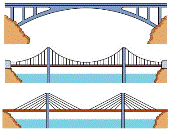Civil and Environmental Engineering, Department of

Department of Civil and Environmental Engineering: Faculty Publications
Document Type
Article
Date of this Version
2019
Citation
Knickerbocker, T.J. and Wittich, C.E. (2019). Efficient intensity measures of slide-rocking structures for precariously balanced rocks. Proceedings of the 12th Canadian Conference on Earthquake Engineering, Canadian Association for Earthquake Engineering, Quebec City, QC.
Abstract
Precariously balanced rocks (PBRs) and other fragile geologic features are important in both the engineering and seismological communities since they are indicative of the maximum ground motion at a site over the rock’s lifetime. Precariously balanced rocks are individual or stacks of freestanding rocks that tend to respond in rigid body modes when subject to seismic excitation – namely, rocking, sliding, slide-rocking, and free-flight, which can lead to overturning. The seismic response of freestanding structures, such as PBRs, is known to be extremely sensitive to small changes in geometry, position, and earthquake excitation. As such, deterministic methods are limited in their application to PBRs and reliable probabilistic relationships are necessary. Previous probabilistic studies on freestanding structures and PBRs have focused on a single response mode, such as overturning, and utilized a single intensity measure, typically the peak ground acceleration. To this end, this paper aims to identify optimal ground motion intensity measures (IMs) that correlate well with the multiple possible rigid body modes including rocking and sliding. In this study, structural parameters, including geometry and friction, were varied to induce each of the fundamental rigid body modes. The response of each structure was simulated to 3750 analytical pulse motions through numerical integration of the slide-rocking equations of motion within MATLAB. The results of the simulations were statistically analyzed to determine the optimal IMs in terms of both sufficiency and efficiency. A set of viable IMs are presented that have more robust probabilistic relationships with the dynamic response of a sliding or rocking block compared to previous IM studies.

